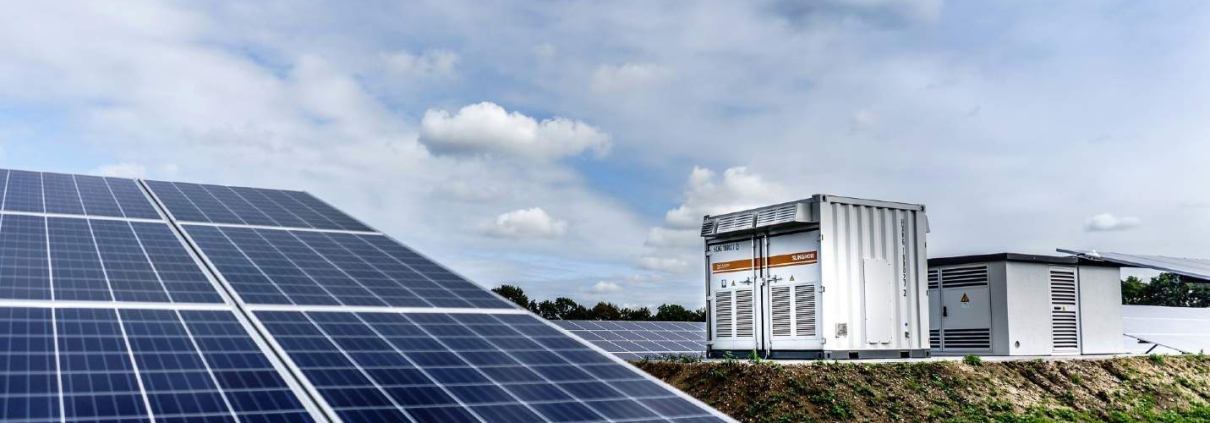What Is a Battery Energy Storage System and Why It Matters for the Future of Power
- Introduction: Understanding the Shift Toward Smarter Energy
As renewable energy sources continue to grow, managing power reliably has become a pressing challenge for businesses, utilities, and industrial facilities across North America. Solar and wind generation are inherently variable, and the electricity demand from commercial operations is not always consistent. To address these fluctuations, energy storage solutions have emerged as a critical component of modern power systems.
One of the most versatile and widely deployed solutions is the Battery Energy Storage System (BESS). But what exactly is a BESS, how does it work, and why is it increasingly important for businesses and the power grid? This article provides a comprehensive overview for decision-makers and professionals interested in understanding the role of BESS in modern energy management.
- What Is a Battery Energy Storage System (BESS)?
A Battery Energy Storage System (BESS) is more than just a collection of batteries. At its core, it stores electrical energy for later use, but a complete system also includes several key components:
- Battery Modules: These are the electrochemical cells, most commonly lithium-ion today, that store energy.
- Battery Management System (BMS): Ensures safe operation, monitors cell voltage, temperature, and state of charge.
- Power Conversion System (PCS) / Inverter: Converts DC electricity from batteries into AC electricity suitable for commercial or grid use.
- Energy Management System (EMS): Optimizes charging, discharging, and integration with local load or renewable generation.
- Thermal Management / Cooling Systems: Keeps batteries within safe operating temperatures, essential for reliability and longevity.
Unlike a standalone battery, a BESS operates at a system level, capable of interacting with buildings, industrial loads, or the wider power grid. While it doesn’t generate electricity, it optimizes energy usage, supports renewable integration, and ensures backup power during outages.
III. Core Functions and Applications of BESS
Battery energy storage systems provide a variety of operational benefits for commercial, industrial, and utility-scale applications:
- Peak Shaving and Load Shifting:
BESS can store energy during off-peak hours when electricity rates are lower and discharge during peak demand periods. This helps businesses manage costs and reduce strain on the electrical grid. - Renewable Integration:
Solar and wind power generation can be unpredictable. By storing excess energy when production is high, a BESS ensures that renewable energy can be used when it is needed most. - Backup Power and Grid Resilience:
In case of power outages or grid disturbances, a BESS provides critical backup power, preventing downtime and protecting sensitive equipment. - Frequency Regulation and Demand Response:
BESS can react rapidly to changes in grid frequency, helping stabilize the network and enabling participation in demand response programs. - Commercial and Industrial Applications:
Businesses can use BESS to maintain continuity during energy price spikes, improve power reliability, and meet sustainability goals.
To explore a deeper understanding of how commercial users leverage BESS for operational efficiency and cost management, check out our guide on commercial battery storage systems.
- Types of Battery Energy Storage Systems
BESS can be classified in multiple ways, depending on battery chemistry, scale, and intended application:
- By Battery Chemistry:
- Lead-Acid: Established technology, lower upfront cost, limited cycle life.
- Lithium-Ion: Dominant in modern applications due to high energy density, long cycle life, and efficiency.
- Flow Batteries: Suitable for long-duration storage (4+ hours), scalable for utility applications.
- By Scale:
- Residential: Small-scale storage for home energy optimization or solar integration.
- Commercial & Industrial (C&I): Medium-scale systems for cost savings, backup, and load management.
- Utility-Scale: Large-scale systems for grid stabilization, renewable energy integration, and peak shaving.
Each type has trade-offs regarding energy capacity, power output, lifecycle, and cost. Selecting the right system depends on the intended application, operational requirements, and budget considerations.
- Advantages of BESS in the Modern Power Landscape
Implementing a BESS offers several tangible benefits:
- Enhanced Energy Efficiency: Optimizes when and how electricity is used.
- Support for Renewable Energy: Smooths out variability from solar and wind generation.
- Operational Cost Savings: Reduces peak demand charges and improves return on energy investments.
- Energy Independence and Reliability: Provides backup power and ensures uninterrupted operations during outages.
Businesses and facilities seeking stable, high-efficiency energy backup can explore advanced solutions at Leoch’s UPS Battery Systems.
- Challenges and Future Outlook
While BESS offers significant advantages, several challenges remain:
- Initial Capital Cost: Large-scale systems require substantial upfront investment.
- Safety and Thermal Management: Lithium-ion systems must be monitored closely to prevent overheating.
- Resource and Supply Chain Constraints: Battery production depends on raw materials like lithium, cobalt, and nickel.
Looking forward, trends in BESS development include:
- Advanced Thermal Management: Liquid cooling systems to improve safety and efficiency.
- Intelligent Energy Management: AI-based systems for predictive energy optimization.
- Modular and Scalable Designs: Flexible deployment for commercial, industrial, and utility applications.
For an example of advanced system design and UL-certified reliability, read about our 5MWh/2.5MW liquid cooling BESS.
VII. Conclusion: BESS as the Backbone of the Energy Future
Battery energy storage systems are rapidly becoming a cornerstone of modern energy infrastructure. They enhance grid reliability, integrate renewable energy, optimize operational costs, and provide backup power in critical situations.
For professionals and decision-makers, understanding BESS is no longer optional—it is essential for planning energy strategy and maximizing efficiency. By combining system knowledge, practical deployment insights, and awareness of future trends, organizations can leverage BESS to achieve both operational and sustainability goals.
Further Reading:


